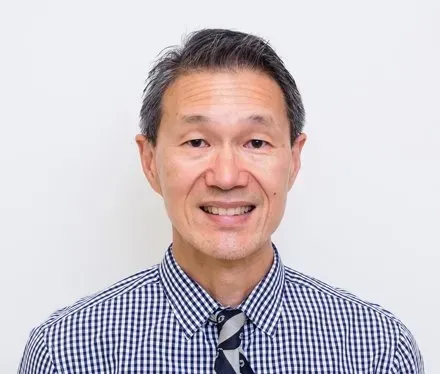Meet The Team
Our team is dedicated to creating a friendly and caring environment for adults and children. With Dr. Edward Wong's extensive experience and his son joining the team as an orthodontist, we continue to deliver high-quality orthodontic care. Our professional and welcoming staff are here to meet your needs and help you achieve a beautiful smile.

Dr Edward Wong
Dr Edward Wong graduated from Melbourne University in 1986 with a Bachelor of Dental Science (BDSc). He was awarded the Bertha Bennet Prize and Ladies Auxiliary Prizes for undergraduate studies. He completed FRACDS in 1990 and was awarded the JG Sutherland Prize in 1990 for dux. He completed his Masters in Orthodontics (MDSc) from Melbourne University in 1992 and completed MRACDS in 2008.
Dr Wong is a member of:
- The Australian Dental Association
- The Australian Society of Orthodontists
- The Australian Orthodontic Board
Dr Wong has been appointed Honorary Senior Fellow in Melbourne Dental School in appreciation for his dedication to dental education since 1993.
Extracurricular Interests
Sports: windsurfing, snow skiing, swimming, competing in Latin dance sports
Other: architectural design, family time and travelling
Frequently Asked Questions
Do I need a referral to see an orthodontist?
A referral is not necessary. However, regular check-ups with your dentist are important before and during orthodontics.
What is the best age to see an orthodontist?
A child should be assessed at seven years of age for dental development, bite problems and jaw irregularities, e.g., impacted teeth, cross-bites, protruding upper teeth, prominent chin and thumb-sucking habits. This provides the opportunity for early treatment, which simplifies future treatment if required. Most children have comprehensive orthodontic treatment from 11 – 15 years of age. If there is any uncertainty, seeing an orthodontist earlier than later is best.
Can adults have braces?
Adults certainly can have orthodontic treatment. They vary from minor alignments with clear braces or invisible aligners to more complex cases requiring a combination of orthodontics and jaw surgery.
What types of braces do you use?
We use conventional metal braces with colours, clear braces, self-tightening (Damon), and internal (Lingual) braces.
What's the difference between metal and clear braces?
They work in the same way. Clear braces are not as visible.
Are self-tightening braces better than conventional braces?
They are both the most effective in tooth movement in appliances today. Self-tightening braces have less friction and create quicker tooth movement. This reduces treatment time and visits for most patients. However, the suitability of each patient needs to be assessed.
Do clear aligners work as well as braces?
Clear aligners are effective for correcting minor tooth irregularities and mild crowding. Moderate to severe tooth irregularities and bite problems are best treated with fixed braces.
What are Lingual braces?
In contrast to conventional braces, lingual braces are attached to the inside/lingual surfaces of teeth, making them practically invisible! They are very effective in tooth movement. However, tongue and speech may take more getting used to. Lingual systems are also more expensive.
Can you have top or bottom braces?
In some cases, with minor irregularities and the bite being good, it is possible to have braces on one arch. Suitability needs to be assessed.
How long does orthodontic treatment take?
The duration varies depending on the severity of tooth irregularities and the complexity of the bite. On average, comprehensive treatment with braces can take 18 – 24 months.
What is a retainer?
A retainer is worn after braces are removed on completion of treatment. It can be fixed/bonded or removable, e.g., a plate. The suitability of each type of retainer needs to be assessed. A retainer guides teeth to settle into the ideal bite and maintains the teeth' alignment. Lack of retainer wear can result in undesirable tooth movement.
How much do braces cost?
The cost varies depending on the type of treatment and appliances required. Payment is made in instalments over the treatment period. The schedule also depends on the insurance rebate. Payment can be made with credit cards, EFTPOS, cash, cheques, or internet transfers.
At what age should my child see an orthodontist?
The ASO (Australian Society of Orthodontists) recommends the first visit to an orthodontist at 8 – 10 years old. Different orthodontic problems need to be assessed at different times.
What is the ideal age to start treatment?
The ideal age to start treatment again varies depending on the problem. For example, early treatment is usually 7 – 8 years of age. Comprehensive braces are usually 12 – 13 years of age.
How long will treatment take?
Treatment duration varies according to the type of treatment. For example, early treatment usually lasts 3 – 6 months. Comprehensive braces are usually 15 – 20 months.
Will treatment hurt?
Teeth can be slightly tender and feel bumpy for a short period, i.e. approximately three days after braces are adjusted or newly placed in the mouth.
Our welcoming team are on hand to answer any questions you may have. Call 03 9873 6818 and speak to our friendly staff.
